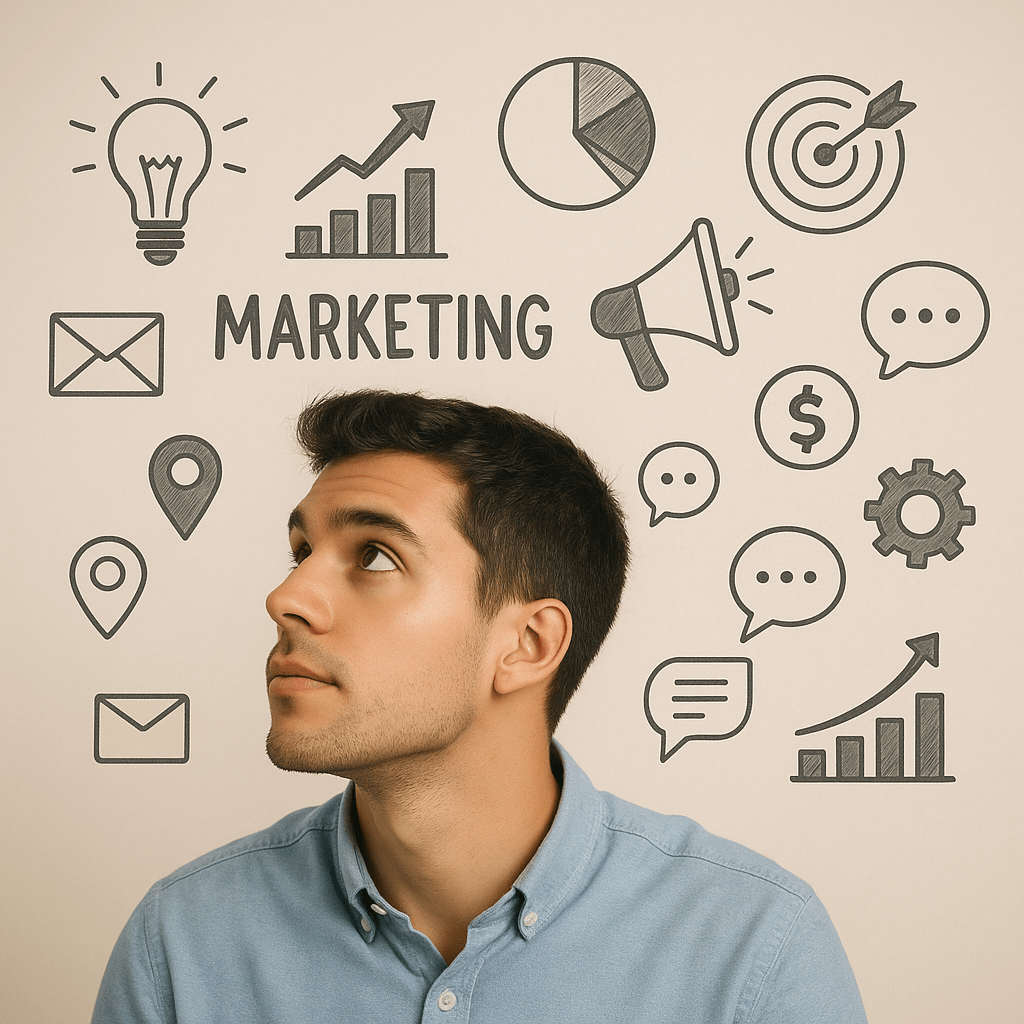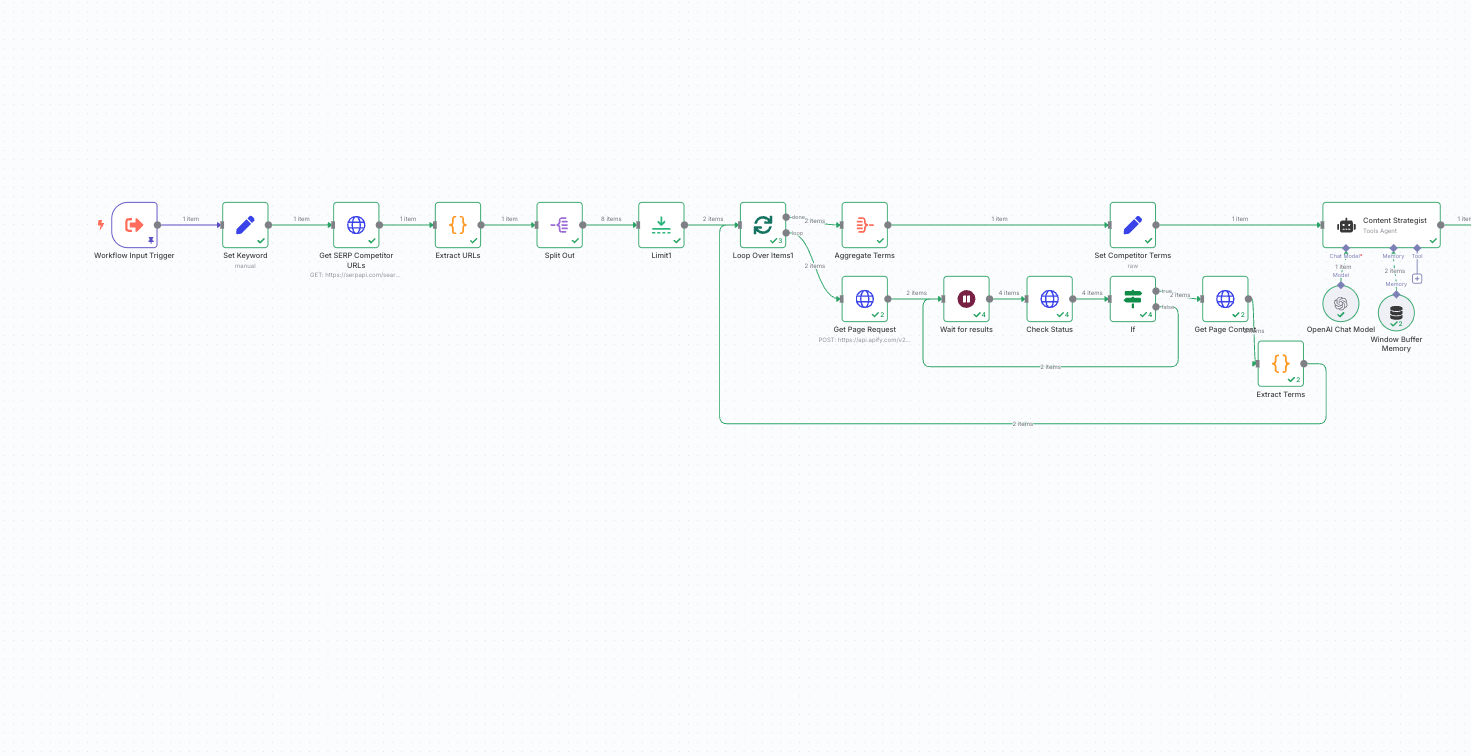In-Depth Guide to ChatGPT in Marketing

Using ChatGPT in Marketing: A Field Guide for Getting Things Done
I have stopped counting the number of AI tools that cross my desk each week. Most of them promise to “revolutionise” marketing, but end up being a solution in search of a problem. ChatGPT, however is different. It is less a single purpose AI tool and more a raw material. It is the engine you can plug into existing workflows to make them faster, smarter, and more scalable.
The conversation around using ChatGPT in marketing has moved past the novelty phase. We know it can write things. The real question is how to use it strategically, to move from generating generic content creation to building systems that actually drive growth. It is not about replacing marketers; it is about augmenting them. Here is what I have learned from being in the trenches with it.

Understanding ChatGPT's Marketing Power
At first, I used it like everyone else: for blog post drafts and rewriting marketing copy. The real shift happened when I started treating it less like a writer and more like a junior strategist. It is incredibly good at pattern recognition and synthesis, which is the core of so much digital marketing work.
It is about merging creativity with efficiency. You have the spark of an idea, a customer feedback quote from a support ticket, a weird spike in a specific metric, and you can use ChatGPT to instantly explore ten different angles for a marketing campaign. It collapses the time between market insights and execution. This is not just a hunch;
McKinsey found that 90% of commercial leaders are aiming to adopt generative AI. The potential is enormous, with PwC estimating AI could increase company revenues by more than $15 trillion by 2030.
I use it for predictive work, but not in the complex, data analysis sense. It is more practical. I will feed it a dozen positive product reviews and ask it to identify the three most common themes. Those themes become the pillars of our next marketing strategy. It is not magic; it is just a brutally efficient way to synthesise qualitative data and get to the core of what customers value. This is a real competitive edge, which is likely why 87% of companies believe AI solutions are key to staying ahead.

Generating Engaging Content with ChatGPT
The biggest risk with AI content is that it all sounds the same. The internet is already filling up with soulless, robotic prose. The only way to avoid this is to treat ChatGPT as an instrument, not an orchestra. You have to teach it how to play your song.
This is where most people go wrong. They ask for "a blog post about X" and get a generic, uninspired result. My process is more involved, but it works. It is a core part of my content marketing automation system.
My Content Generation Workflow
- The Brain Dump: I start with a messy document of my own thoughts, research links, and key data points. I do not edit it. This raw material is crucial.
- The Brand Voice Guide: I give ChatGPT a short, clear guide on our brand’s tone. I include things like: “Write in simple, direct language. Use short sentences. Avoid jargon like ‘synergyʼ or ‘leverage.̓ Our tone is helpful and grounded, not aspirational.”
- The Prompt: I combine the two. My ChatGPT prompt will look something like this:
“Act as a content strategist. Using the provided brain dump and brand guidelines, write a 1,200-word blog post with the title ‘[Working Title]’. Structure it with an introduction, three main sections, and a conclusion. Focus on [Key Takeaway #1] and [Key Takeaway #2]. Use the data point from [Source] in the second section.”
The result is a first draft that is already 70% of the way there. My job shifts from being a writer to being a sharp editor and strategist. I am not battling a blank page; I am refining an existing structure, adding personal anecdotes, and ensuring the nuance is right. It does not dilute creativity; it focuses it on the highest value tasks.

Streamlining SEO with ChatGPT
Beyond general content, I have integrated ChatGPT into the core of my SEO workflow. SEO can feel like a grind of manual, repetitive tasks. This is one of the clearest ChatGPT use cases for getting time back.
- Keyword Brainstorming: I go beyond basic keyword tools. I feed ChatGPT a core topic and ask for semantic keywords, long tail questions that real users might ask, and intent based clusters like "informational vs. commercial" queries.
- Meta Descriptions at Scale: Writing unique meta descriptions for hundreds of products and services is tedious. I can now export a CSV and prompt ChatGPT for unique, compelling descriptions.
- Schema Markup Generation: I use ChatGPT to generate the correct JSON-LD schema markup from FAQ pages.
- Topic Cluster Outlining: I use it to build topical authority and focus on marketing content hubs.
Personalising Customer Interactions
Personalisation is not just {{first_name}}. True personalisation is about relevance at scale.
Building Personas from Raw Data
I export anonymised customer feedback and ask ChatGPT to build data backed user personas: goals, frustrations, and motivations. This shapes marketing strategies and content creation.
Customising at Scale
Once personas are defined, I create dozens of email variations. With API integration, marketing automation tools can trigger ChatGPT to dynamically generate copy blocks, increasing customer experience impact.
Automating Social Media Engagement
Social media needs constant content. I feed new blog post URLs to ChatGPT. My prompt to get results:
- “Analyse the content at this URL: [link]. Based on the article, generate:
- 3 LinkedIn posts (a question, a stat-driven insight, a tactical tip)
- 5 Tweets (quotes, surprising facts, with relevant hashtags)”
I tweak the output and schedule it using social media marketing tools like Buffer or Sprout. This automation saves hours weekly.
Case Studies: ChatGPT Marketing Success Stories
We used ChatGPT to increase adoption of a hidden product feature:
- Research Synthesis: Exported 50 support tickets. Asked ChatGPT to identify top "jobs to be done".
- Ad Copy Ideation: Prompted ChatGPT to write 20 LinkedIn ad variations for each need.
- Email Drafts: Used personalisation workflow for a segment of non-users.
Results: 30% higher CTR in LinkedIn ads, 22% lift in email-driven adoption. All done using ChatGPT in marketing within days, not weeks.
Potential Challenges and Solutions
- Hallucinations: Always fact-check. Never trust unsourced stats.
- Brand Integrity: Guard your brand’s tone. Use strong brand voice prompts.
- Cultural Missteps: AI lacks nuance. Always review.
- Data Privacy: Never upload PII. Use anonymised data only.
The Future of ChatGPT for Marketing
The future of chatgpt for marketing is about predictive content and real-time personalisation. We are moving from prompts to autonomous AI chatbots and agents. ChatGPT will not write your marketing strategy, but it can help you execute faster, better, and with more insight.
FAQs
How can ChatGPT be used for content marketing?
Use ChatGPT to accelerate content creation: brainstorming, outlining, drafting, repurposing. Guide it with strategic prompts.
What are some success stories of using ChatGPT in marketing?
Targeted ad copy increased CTR by 30%. Personalised emails drove 22% more feature adoption.
How does ChatGPT handle customer personalisation?
It scales personalisation through relevant content variations for different target audiences and segments. Just define strategy, and let ChatGPT write the copy.
What are the benefits of AI in marketing?
Faster execution, real-time customer insights, dynamic email marketing, optimized marketing messages, and smarter data analysis across social media platforms.
How do marketers use AI tools like ChatGPT in 2025 and beyond?
Marketers who use tools like ChatGPT in 2025 build marketing campaigns faster, scale copywriting, optimise SEO, personalise at scale, and gain competitive marketing insights with minimal lift.
What’s the difference between ChatGPT and other language models?
While ChatGPT excels in tone and conversational fluency, different models offer distinct strengths. Stay tuned as OpenAI continues updating the latest ChatGPT features and generative AI tools.
